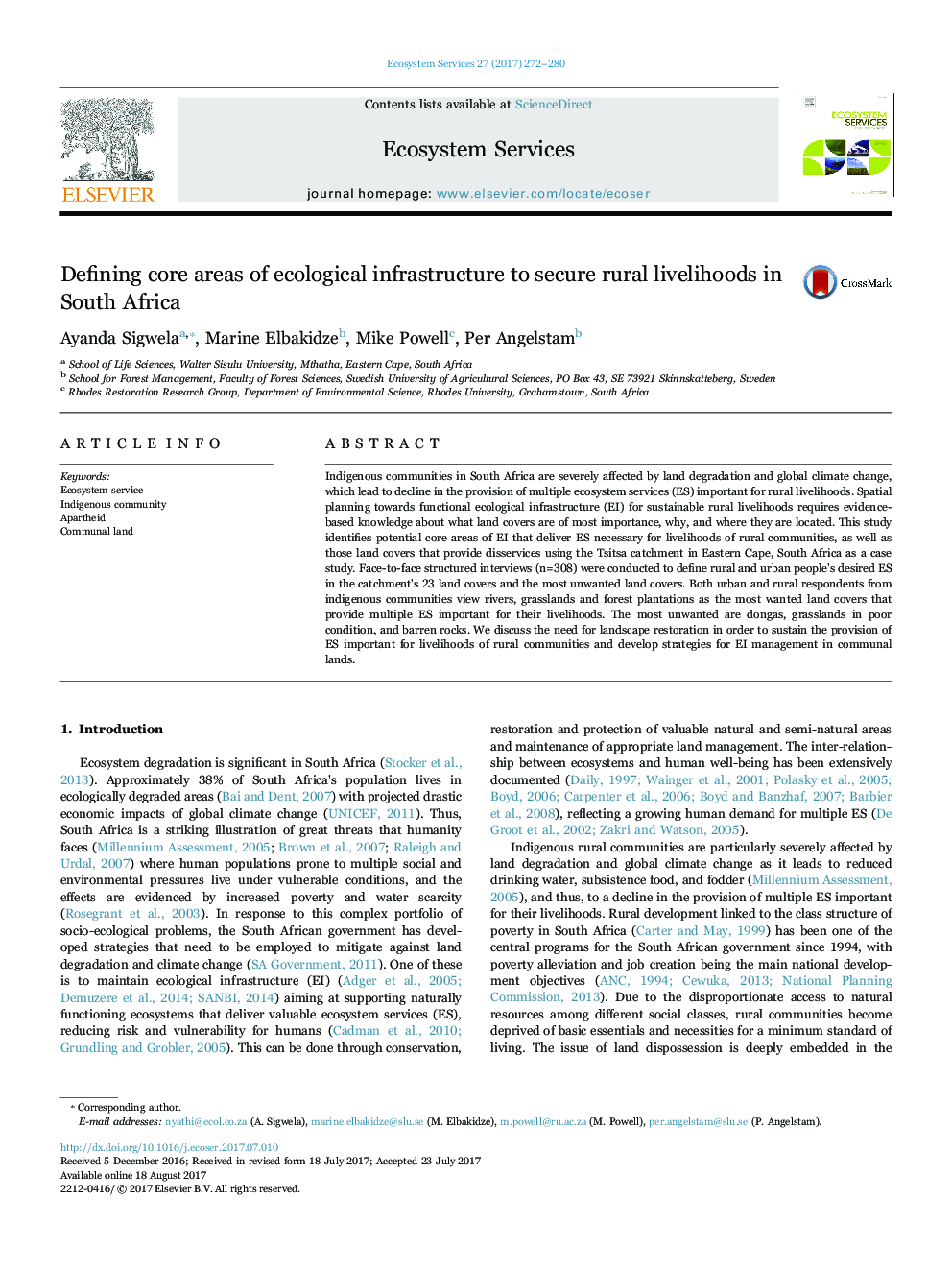| Article ID | Journal | Published Year | Pages | File Type |
|---|---|---|---|---|
| 6556546 | Ecosystem Services | 2017 | 9 Pages |
Abstract
Indigenous communities in South Africa are severely affected by land degradation and global climate change, which lead to decline in the provision of multiple ecosystem services (ES) important for rural livelihoods. Spatial planning towards functional ecological infrastructure (EI) for sustainable rural livelihoods requires evidence-based knowledge about what land covers are of most importance, why, and where they are located. This study identifies potential core areas of EI that deliver ES necessary for livelihoods of rural communities, as well as those land covers that provide disservices using the Tsitsa catchment in Eastern Cape, South Africa as a case study. Face-to-face structured interviews (n=308) were conducted to define rural and urban people's desired ES in the catchment's 23 land covers and the most unwanted land covers. Both urban and rural respondents from indigenous communities view rivers, grasslands and forest plantations as the most wanted land covers that provide multiple ES important for their livelihoods. The most unwanted are dongas, grasslands in poor condition, and barren rocks. We discuss the need for landscape restoration in order to sustain the provision of ES important for livelihoods of rural communities and develop strategies for EI management in communal lands.
Related Topics
Life Sciences
Agricultural and Biological Sciences
Agricultural and Biological Sciences (General)
Authors
Ayanda Sigwela, Marine Elbakidze, Mike Powell, Per Angelstam,
